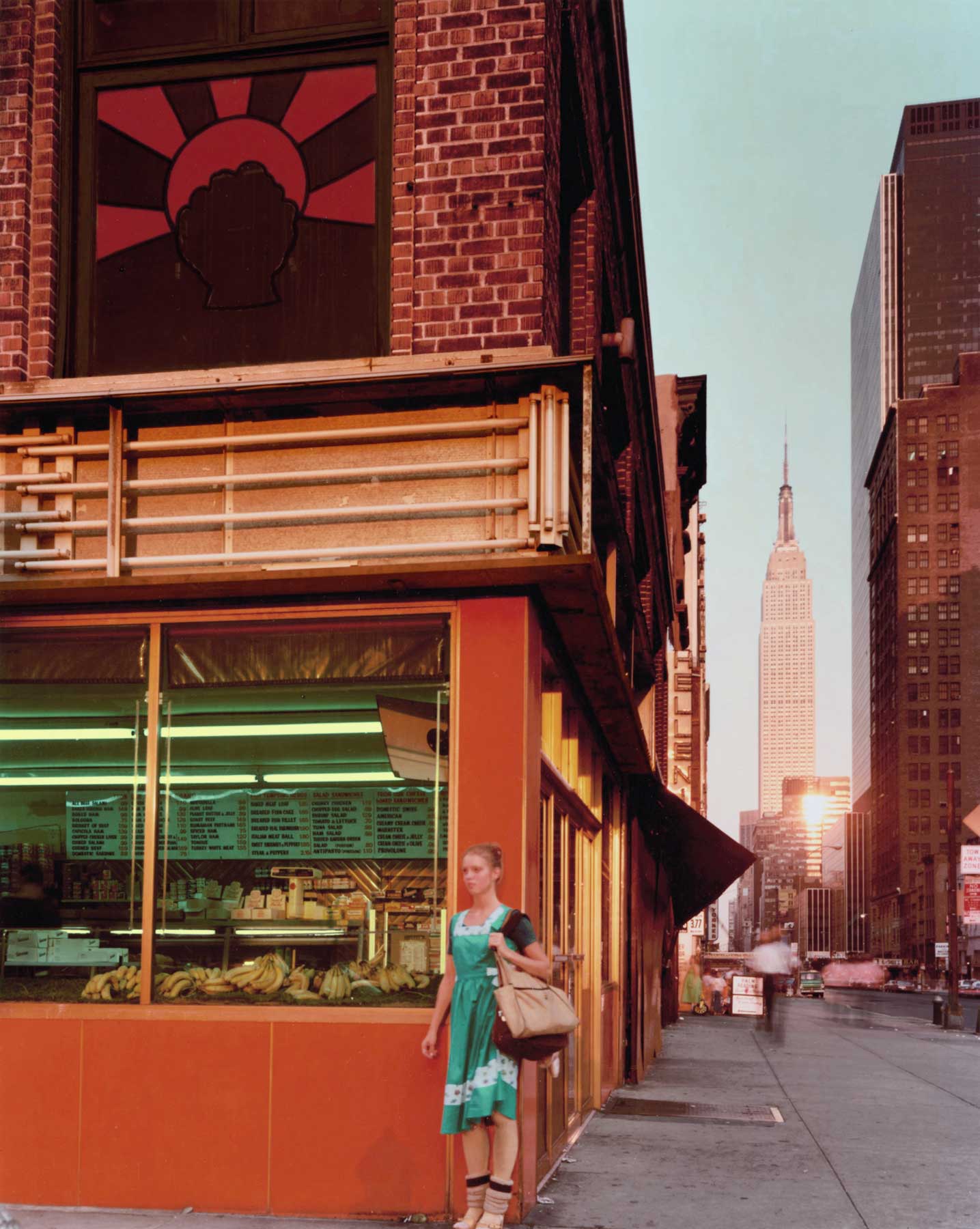I was trying to unlock photography from the aesthetic of ‘the decisive moment’ – a difficult thing to give up – and to bring the photograph closer to the experience itself, which is inchoate and unresolved in ways that I had been reluctant to deal with before.
Joel Meyerowitz
In the second half of the 1960s, Joel Meyerowitz slowly began to experiment with the notion that a photograph could hang purely on the play of colour in a frame; a flash of red in a first floor window rhymed with the red material of a hat in the foreground, the matching yellow trousers of a picnicking couple, or even a singular orange shaft of light cutting straight down a woman’s cheekbone. Colour became Meyerowitz’s preoccupation, and its limitations forced him to readdress what a photograph could be. Early colour film presented him with several obstacles to overcome, primarily in its need for a slow shutter speed. This limited the ability to capture fast-paced action and prevented any substantial depth of field. Meyerowitz celebrated these limitations by focusing on absence as well as presence in his compositions.
The years of the late 1960s were vital in formulating what Joel Meyerowitz calls ‘field photographs’. He relied less and less on his black- and-white camera, and began to challenge himself to move away from what he described as the ‘caught moment’ towards a more non-hierarchical image in which everything in the image, including the colour, played an equal, vital role. He emptied the centre of the frame of a specific action or event, creating a more complicated image that made the rhythmic complexities of life on the street the subject. Meyerowitz has said; ‘I was trying to unlock photography from the aesthetic of ‘the decisive moment’ – a difficult thing to give up – and to bring the photograph closer to the experience itself, which is inchoate and unresolved in ways that I had been reluctant to deal with before.’
By 1972, Meyerowitz had excluded black and white altogether from his output and was focusing entirely on producing street scenes that forfeited action, but retained energy. Meyerowitz had reached a point at which he could describe a scene in incredible and intricate detail, all in the service of no particular event. He had moved away from the convention of a centralised composition and was making images that reverberated all over with dynamism.
In the summer of 1976, after meditating on colour for over a decade, Meyerowitz exchanged his trusty Leica for a vintage 8 x 10 Deardoff view camera and replaced the bustling scenes of the sidewalk with the serene and expansive landscapes of Cape Cod, Massachusetts. He photographed there for two consecutive summers, and the resulting book of photographs, Cape Light, was first published in 1978. The photographs took light and colour as their primary subject, and the book played a significant role in the repositioning of colour photography. It is now regarded as one of the most significant photobooks of the twentieth-century, and its release marked the culmination of Meyerowitz’s fifteen years exploring the potential of colour photography
(By Thea Gregory)
